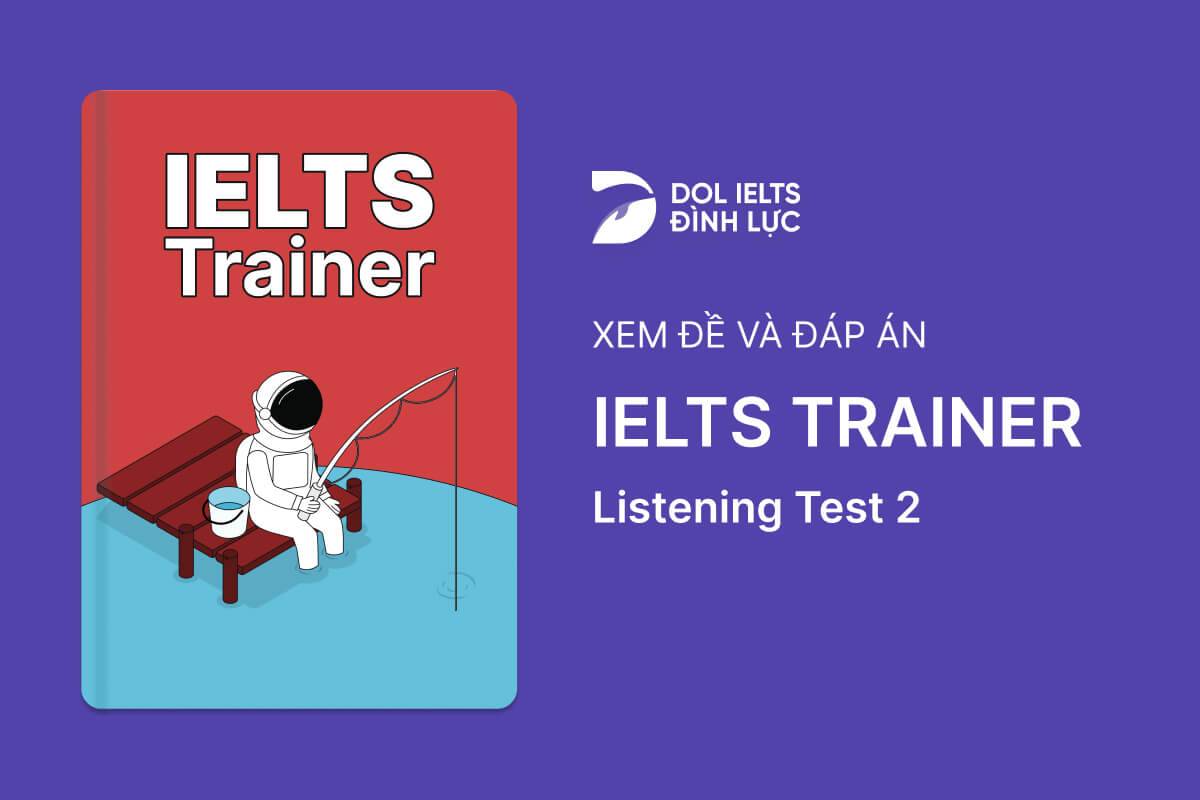IELTS Trainer - Listening Test 2 With Practice Test, Answers And Explanation
Luyện tập đề IELTS Online Test IELTS Trainer - Listening Test 2 được lấy từ cuốn sách IELTS Trainer với trải nghiệm thi IELTS trên máy và giải thích đáp án chi tiết bằng Linearthinking, kèm answer key và list từ vựng IELTS cần học trong bài đọc.
Section
👂️ Bài nghe section 1
❓ Tapescript section 1
🔥 Đáp án & giải thích section 1
Giải thích chi tiết
 Xác định loại từ cần điền là tên email, chú ý viết liền (Email: .... @worldnet.com)
Xác định loại từ cần điền là tên email, chú ý viết liền (Email: .... @worldnet.com)
=> Biết đáp án sắp tới khi nghe "By email I check it regularly."
 Sau đó Edwina nói "It's Edwina like my name then R-I, the first two letters of my surname. at worldnet dot com."
Sau đó Edwina nói "It's Edwina like my name then R-I, the first two letters of my surname. at worldnet dot com."
=> Như tên của cô ấy và thêm ri vào
 Sau đó Clive spell lại để check " E-D-W-I-N-A-R-I at worldnet dot com?"
Sau đó Clive spell lại để check " E-D-W-I-N-A-R-I at worldnet dot com?"
=> Đáp án đúng là edwinari 
Section
👂️ Bài nghe section 2

❓ Tapescript section 2
🔥 Đáp án & giải thích section 2
Giải thích chi tiết
 Mình cần nghe xem đâu là 2 nguồn funding của dự án
Mình cần nghe xem đâu là 2 nguồn funding của dự án
=> Đáp án sẽ tới sau i "We’re extremely proud of this new facility"
 Speaker nói "We'd got quite far into the planning stage when the multinational pulled out and both central and local government decided they couldn't afford anything"
Speaker nói "We'd got quite far into the planning stage when the multinational pulled out and both central and local government decided they couldn't afford anything"
=> Cả multination company, local và central government đều không tài trợ cho dự án
=> Loại A, B và C 
 Speaker nói tiếp "...but at the last moment, we had an amazing donation of several million pounds from a national transport company"
Speaker nói tiếp "...but at the last moment, we had an amazing donation of several million pounds from a national transport company"
=> Vào phút chót nhận được khoảng tài trợ hàng triệu bảng Anh từ national transport company.
=> Đáp án là D 
Section
👂️ Bài nghe section 3
❓ Tapescript section 3
🔥 Đáp án & giải thích section 3
Giải thích chi tiết
 Mình cần nghe xem Chloe lo lắng về điều gì
Mình cần nghe xem Chloe lo lắng về điều gì
=> Biết đáp án sắp tới khi nghe "Is there something on the course that you're not sure about?"
 Đầu tiên cô ấy nói "I've been working for a publisher for the last four years"
Và Ivan trả lời "That will be really valuable experience "
Đầu tiên cô ấy nói "I've been working for a publisher for the last four years"
Và Ivan trả lời "That will be really valuable experience "
=> Chloe đã có 4 năm kinh nghiệm rồi
=> Loại đáp án C 
 Tiếp tục nghe Chloe nói "I'm used to dealing with figures and percentages"
Tiếp tục nghe Chloe nói "I'm used to dealing with figures and percentages"
=> Quen với các con số rồi (không lo về math)
=> Loại đáp án A 
 Cô ấy nói tiếp "...but it's been a while since I've sat down and put my ideas into an essay. I was never that good at it and I'm not sure I can do it now."
Cô ấy nói tiếp "...but it's been a while since I've sat down and put my ideas into an essay. I was never that good at it and I'm not sure I can do it now."
=> Gặp khó khăn trong việc sắp xếp các ý tưởng thành 1 essay
=> Đáp án là B 
Section
👂️ Bài nghe section 4
Almanacs connected the weather with the positions of different
at particular times.31
A hydrometer showed Levels of
(Nicholas Cusa 1450)32
Temperature variations – first measured by a thermometer containing
(Galileo Galilei 1595)33
A barometer indicated air pressure (Evangelista Torricelli 1645)
The use of the
allowed information to be passed around the world.34
Daily
were produced by the French from 1863.35
❓ Tapescript section 4
🔥 Đáp án & giải thích section 4
Giải thích chi tiết
 Mình cần nghe xem Almanacs liên hệ thời tiết với position của thứ gì (Almanacs connected the weather with the positions of different .... at particular times)
Mình cần nghe xem Almanacs liên hệ thời tiết với position của thứ gì (Almanacs connected the weather with the positions of different .... at particular times)
=> Đáp án sẽ tới khi nghe "The earliest weather forecasts appeared in the 1500s in almanacs"
 Tiếp theo nghe "Their predictions relied heavily on making links between the weather and where the planets were in the sky on certain days"
Tiếp theo nghe "Their predictions relied heavily on making links between the weather and where the planets were in the sky on certain days"
=> Dự đoán dựa vào mối liên kết giữa weather và vị trí của các hành tinh trên bầu trời on certain days (links =connected) ( particular times.=certain days)
=> Đáp án là planets 


